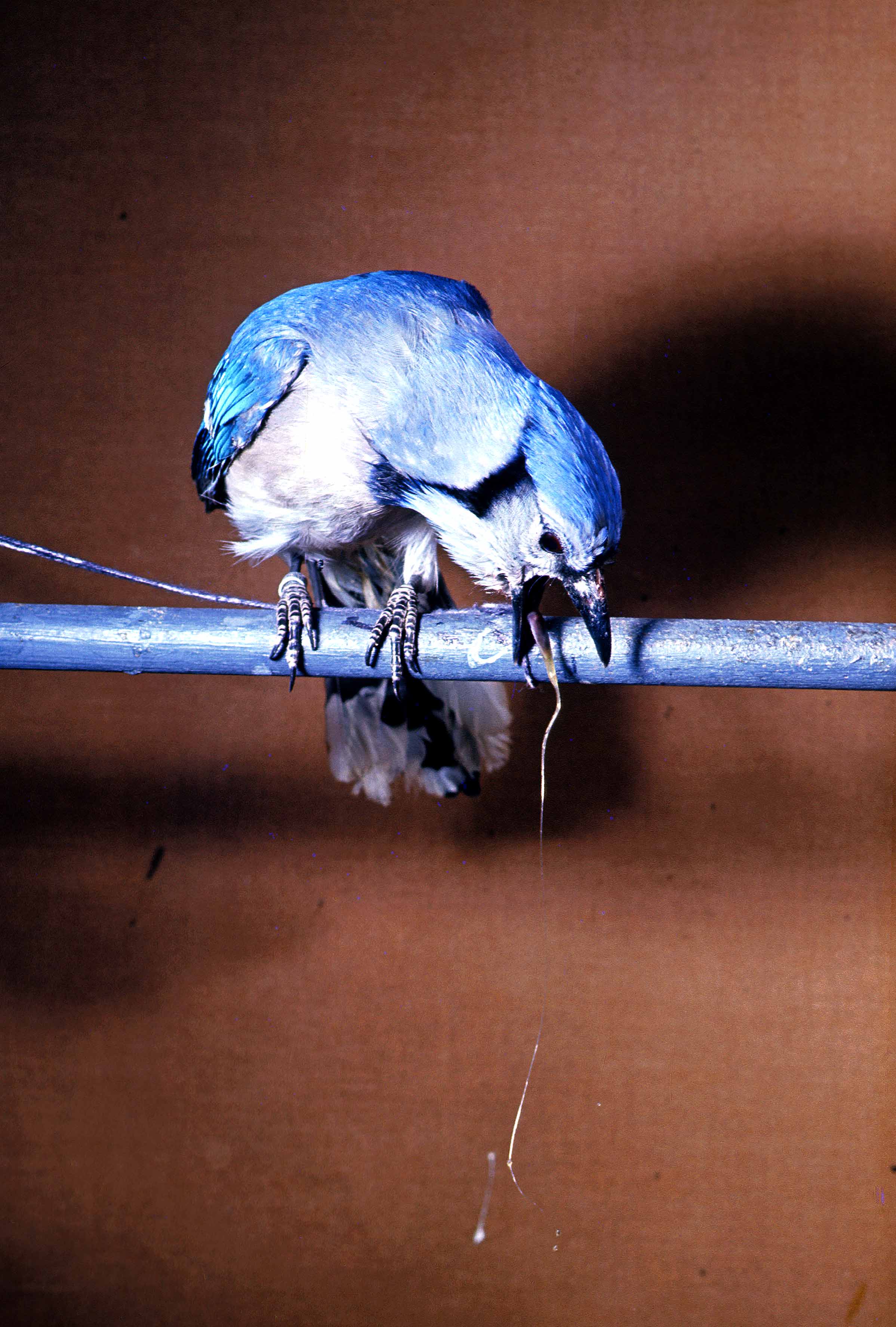The Case Of The Barfing Blue Jay
For some predators, chowing on a monarch butterfly can have digestive repercussions.

During a recent show, SciFri’s Flora Lichtman discussed monarch butterflies with Lincoln Brower, a biology professor at Sweet Briar College in Virginia. During the conversation, Brower mentioned a photograph that he had taken of a “barfing blue jay,” which had just suffered a distasteful experience dining on a monarch. We thought you might be curious to see the image:

Why the upchuck? Monarchs feed on milkweeds, plants which contain chemicals called cardiac glycosides that the insects absorb. While the toxins don’t harm the butterflies, they taste bitter and can cause vomiting in birds that chow on monarchs.
Some bird and mice predators, however, figure out a way around the poison—either by avoiding monarchs once they’ve had an unpleasant experience, or by pecking or nibbling at potential monarch meals to gauge the insect’s toxicity level. If the butterfly tastes “clean,” it’s dinner.
Julie Leibach is a freelance science journalist and the former managing editor of online content for Science Friday.